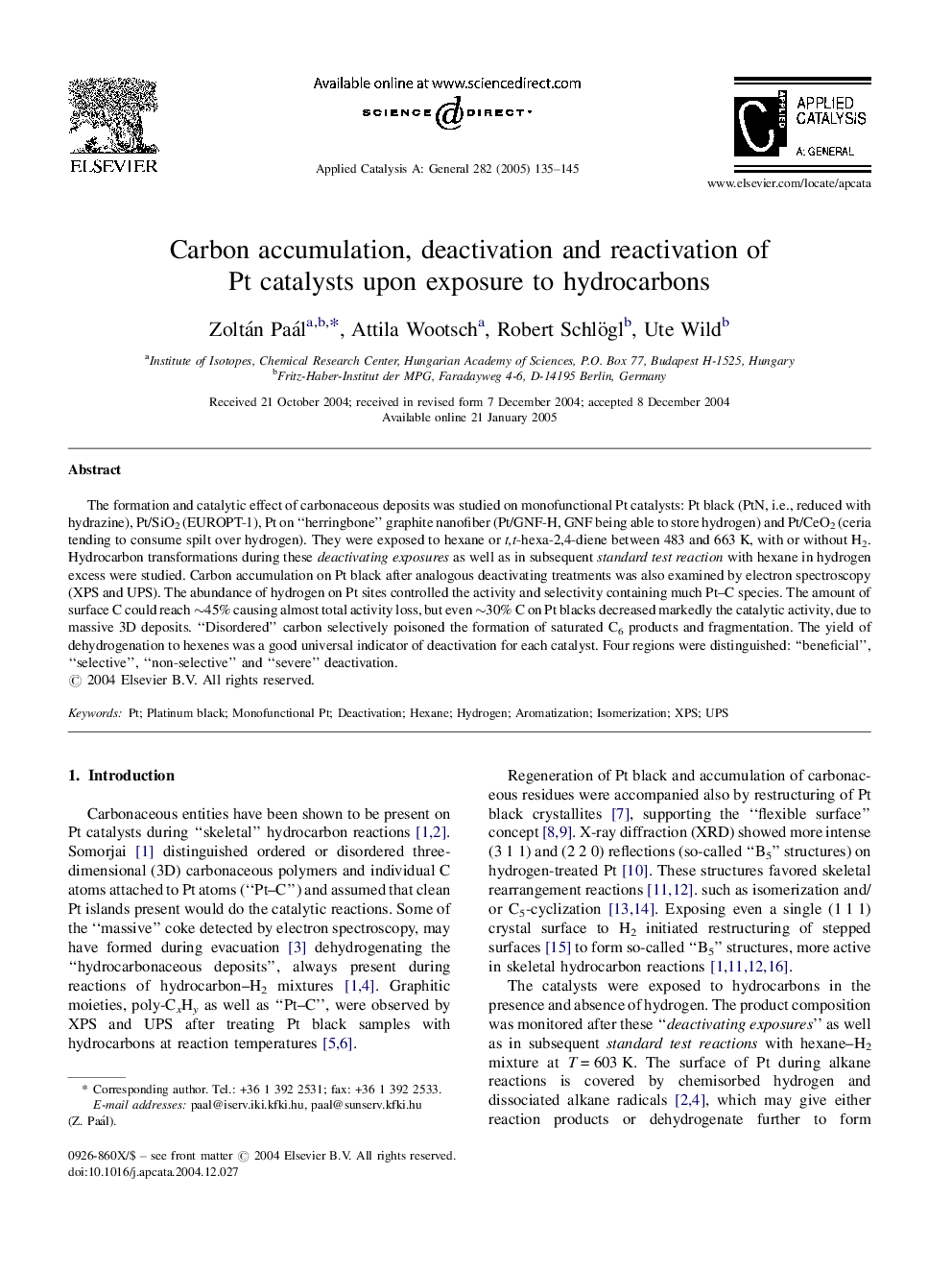| کد مقاله | کد نشریه | سال انتشار | مقاله انگلیسی | نسخه تمام متن |
|---|---|---|---|---|
| 9608047 | 46039 | 2005 | 11 صفحه PDF | دانلود رایگان |
عنوان انگلیسی مقاله ISI
Carbon accumulation, deactivation and reactivation of Pt catalysts upon exposure to hydrocarbons
دانلود مقاله + سفارش ترجمه
دانلود مقاله ISI انگلیسی
رایگان برای ایرانیان
کلمات کلیدی
موضوعات مرتبط
مهندسی و علوم پایه
مهندسی شیمی
کاتالیزور
پیش نمایش صفحه اول مقاله

چکیده انگلیسی
The formation and catalytic effect of carbonaceous deposits was studied on monofunctional Pt catalysts: Pt black (PtN, i.e., reduced with hydrazine), Pt/SiO2 (EUROPT-1), Pt on “herringbone” graphite nanofiber (Pt/GNF-H, GNF being able to store hydrogen) and Pt/CeO2 (ceria tending to consume spilt over hydrogen). They were exposed to hexane or t,t-hexa-2,4-diene between 483 and 663Â K, with or without H2. Hydrocarbon transformations during these deactivating exposures as well as in subsequent standard test reaction with hexane in hydrogen excess were studied. Carbon accumulation on Pt black after analogous deactivating treatments was also examined by electron spectroscopy (XPS and UPS). The abundance of hydrogen on Pt sites controlled the activity and selectivity containing much PtC species. The amount of surface C could reach â¼45% causing almost total activity loss, but even â¼30% C on Pt blacks decreased markedly the catalytic activity, due to massive 3D deposits. “Disordered” carbon selectively poisoned the formation of saturated C6 products and fragmentation. The yield of dehydrogenation to hexenes was a good universal indicator of deactivation for each catalyst. Four regions were distinguished: “beneficial”, “selective”, “non-selective” and “severe” deactivation.
ناشر
Database: Elsevier - ScienceDirect (ساینس دایرکت)
Journal: Applied Catalysis A: General - Volume 282, Issues 1â2, 30 March 2005, Pages 135-145
Journal: Applied Catalysis A: General - Volume 282, Issues 1â2, 30 March 2005, Pages 135-145
نویسندگان
Zoltán Paál, Attila Wootsch, Robert Schlögl, Ute Wild,